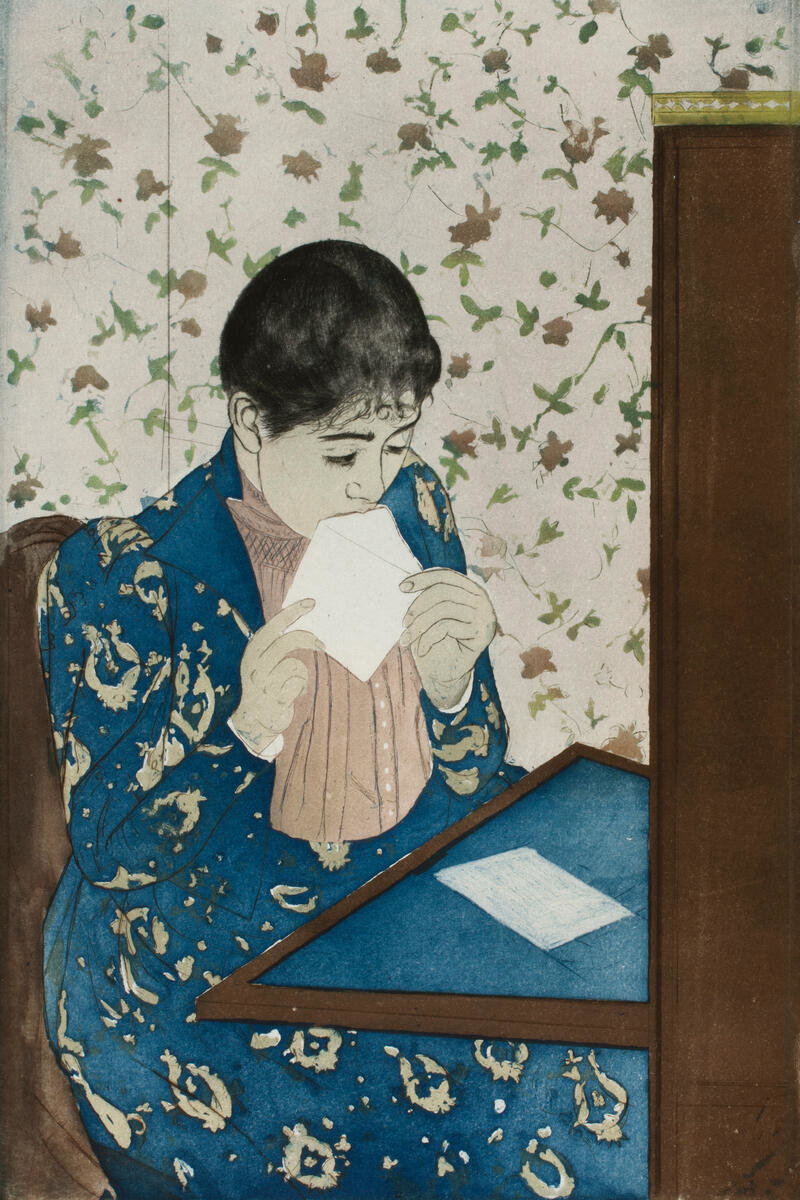Printmaking
Mary Cassatt favored two printmaking techniques: softground etching and drypoint. With softground etching, she would lay a pencil drawing over a copper plate coated in acid-resistant wax. Then she would retrace the drawing with some force, pushing down into the waxed surface to reach the metal. The paper would then be peeled away and the plate immersed in an acid bath, which would bite into the exposed copper, incising lines into it. The plate was then rinsed, cleaned of remaining wax, inked, and run through a press, transferring the image onto paper. Cassatt often combined softground etching with aquatint, a process that creates areas of tone rather than line. In the mid-1880s, Cassatt began making drypoints. With this medium, she would use a hard stylus or needle to incise lines directly into a copper plate, which was then inked and printed.
A number of works in this exhibition are not “complete,” but rather are test prints that Cassatt made to assess a composition in development. They shed light on her creative process, demonstrating that she was both methodical and inventive, willing to combine techniques and experiment with materials.
Mary Cassatt began her career working almost exclusively as a painter. She embraced printmaking as an additional form of artistic expression in 1879. Her interest in prints stemmed from the innovative methods she saw used by the leading printmakers of the day, especially Edgar Degas. Working with Degas, Cassatt learned how to make prints and continued creating them for the rest of her life.
Cassatt’s prints reflect the lives of upper-class women in Paris in her day. They focus on scenes of domesticity, childcare, and outings to the opera. They were unconventional both in terms of technique—she would combine various printmaking methods—and subject matter, namely depictions of women’s inner states of mind, solitary moments, and intimate interactions with friends and family members. This focus on the interior experience of social and private spaces was entirely modern, and it continues to resonate with viewers more than a century later.




